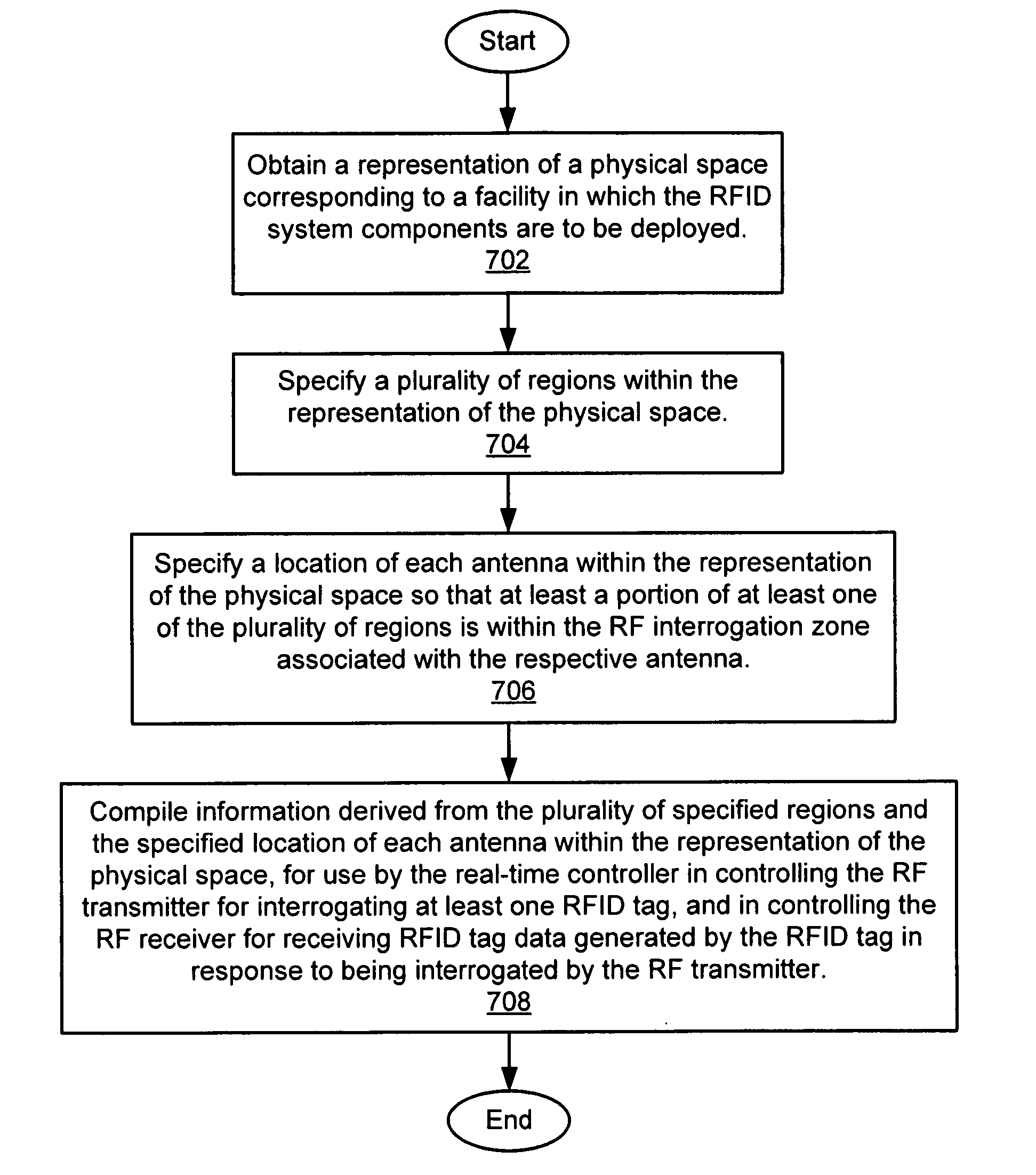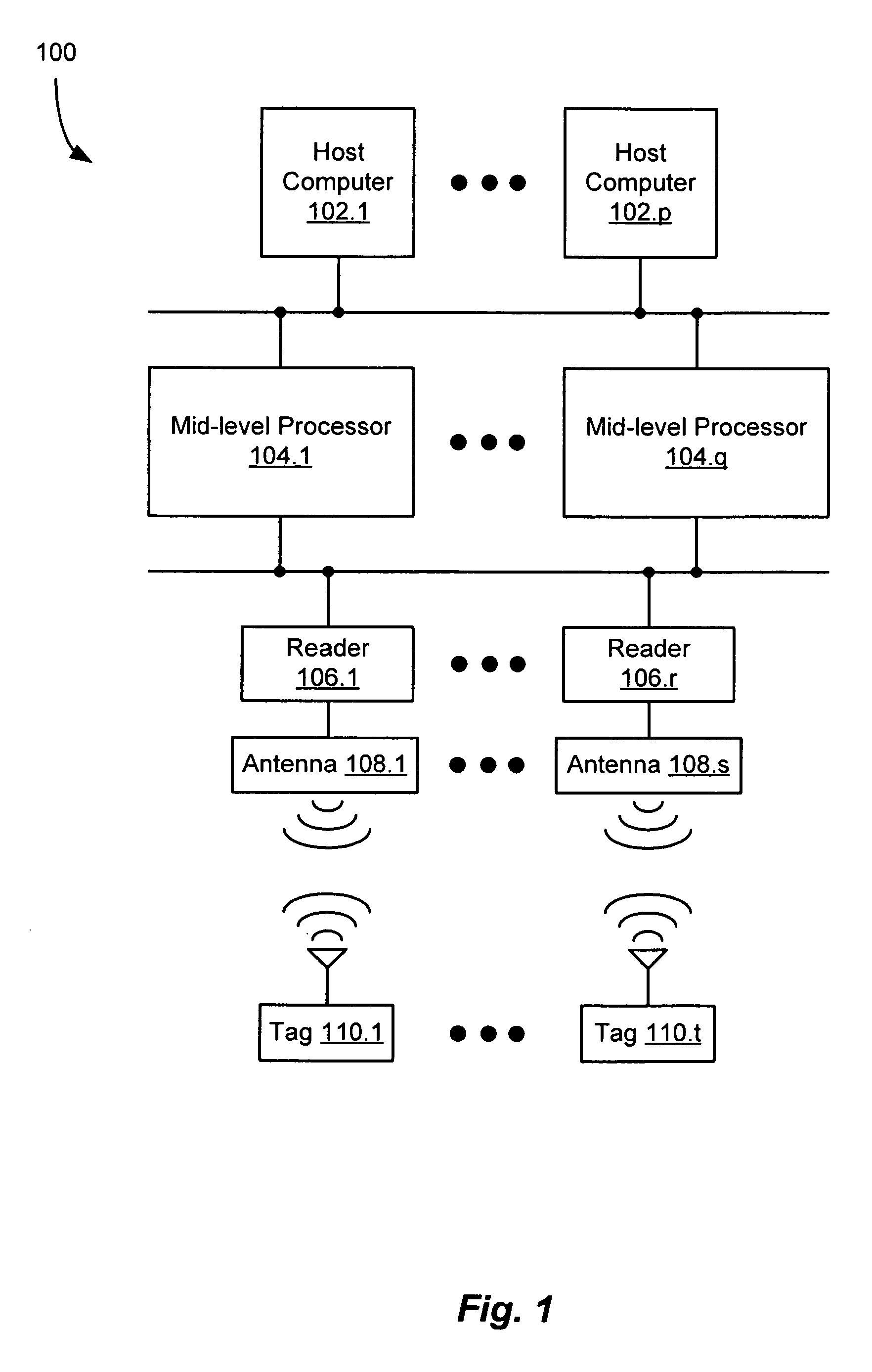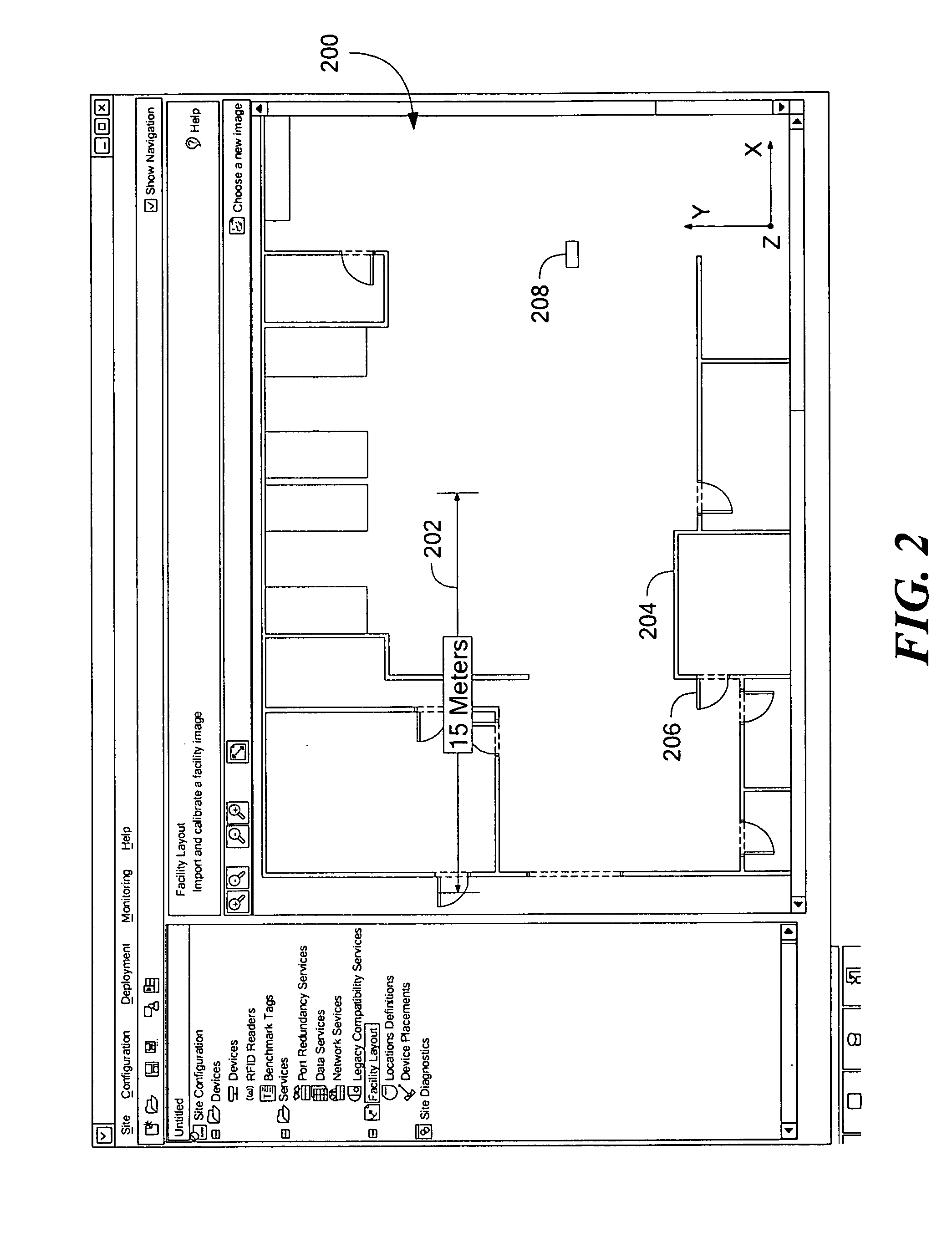Configuration management system and method for use in an RFID system including a multiplicity of RFID readers
a technology of configuration management system and rfid reader, which is applied in the direction of burglar alarm mechanical actuation, instruments, wireless communication, etc., can solve the problems of difficult to determine reliably the direction of travel of the tagged item, the operation of the conventional rfid system is problematic, and the effect of increasing the efficiency of the rfid system
- Summary
- Abstract
- Description
- Claims
- Application Information
AI Technical Summary
Benefits of technology
Problems solved by technology
Method used
Image
Examples
Embodiment Construction
[0032] U.S. Provisional Patent Application No. 60 / 727,453 filed Oct. 17, 2005 entitled CONFIGURATION MANAGEMENT SYSTEM AND METHOD FOR USE IN AN RFID SYSTEM INCLUDING A MULTIPLICITY OF RFID READERS is incorporated herein by reference.
[0033] A system and method is provided that manages the configuration and control of components of a radio frequency identification (RFID) system, taking into account how the RFID system components are associated with one or more physical locations within an environment in which the RFID system is deployed. The presently disclosed system allows associations between the system components and the physical locations to be specified in a dynamic fashion based primarily upon how the various components are used within the system environment. In addition, the presently disclosed system allows logical and physical relationships between the system components and the physical locations to be determined in accordance with how the components and locations are assoc...
PUM
 Login to View More
Login to View More Abstract
Description
Claims
Application Information
 Login to View More
Login to View More - R&D
- Intellectual Property
- Life Sciences
- Materials
- Tech Scout
- Unparalleled Data Quality
- Higher Quality Content
- 60% Fewer Hallucinations
Browse by: Latest US Patents, China's latest patents, Technical Efficacy Thesaurus, Application Domain, Technology Topic, Popular Technical Reports.
© 2025 PatSnap. All rights reserved.Legal|Privacy policy|Modern Slavery Act Transparency Statement|Sitemap|About US| Contact US: help@patsnap.com



